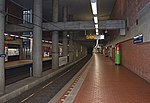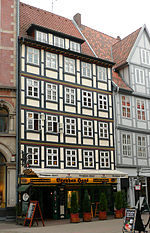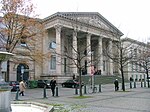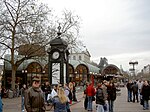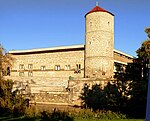Altes Rathaus, Hanover
Buildings and structures in HanoverCity and town halls in GermanyLower Saxony building and structure stubs

The Altes Rathaus was the first town hall in the German city of Hanover. First built in the old city district in 1410 and extensively restored in 1953 and 1964 after heavy bomb damage in World War II, it is the oldest secular building in the city. The market façade with the highly sophisticated Brick Gothic of the lucarnes has been preserved and partly restored in its medieval shape. Some elements of it were copied on other wings of the building.
Excerpt from the Wikipedia article Altes Rathaus, Hanover (License: CC BY-SA 3.0, Authors, Images).Altes Rathaus, Hanover
Am Markte, Hanover Centre (Centre)
Geographical coordinates (GPS) Address External links Nearby Places Show on map
Geographical coordinates (GPS)
| Latitude | Longitude |
|---|---|
| N 52.3714 ° | E 9.7358 ° |
Address
Altes Rathaus
Am Markte
30159 Hanover, Centre (Centre)
Lower Saxony, Germany
Open on Google Maps

